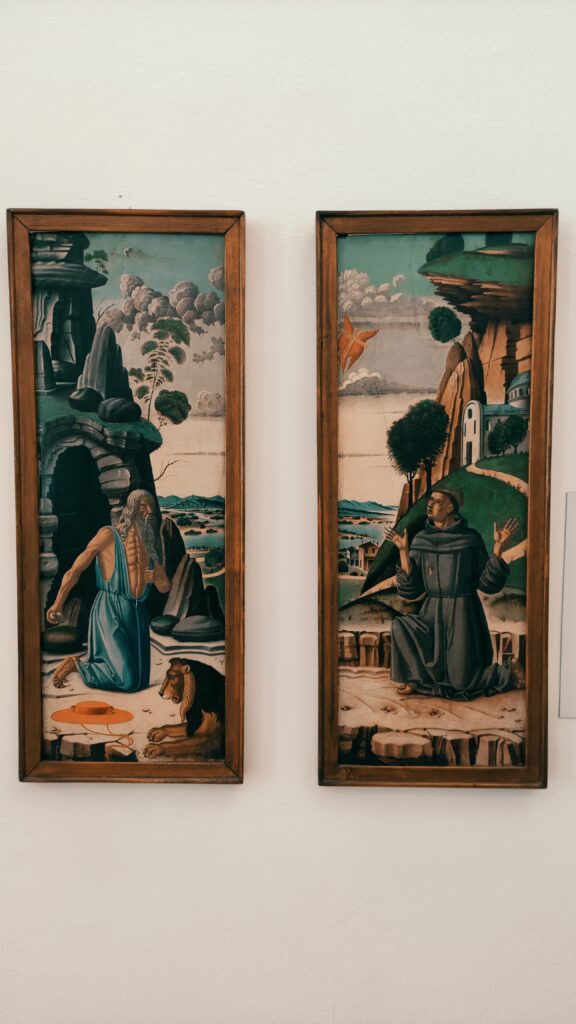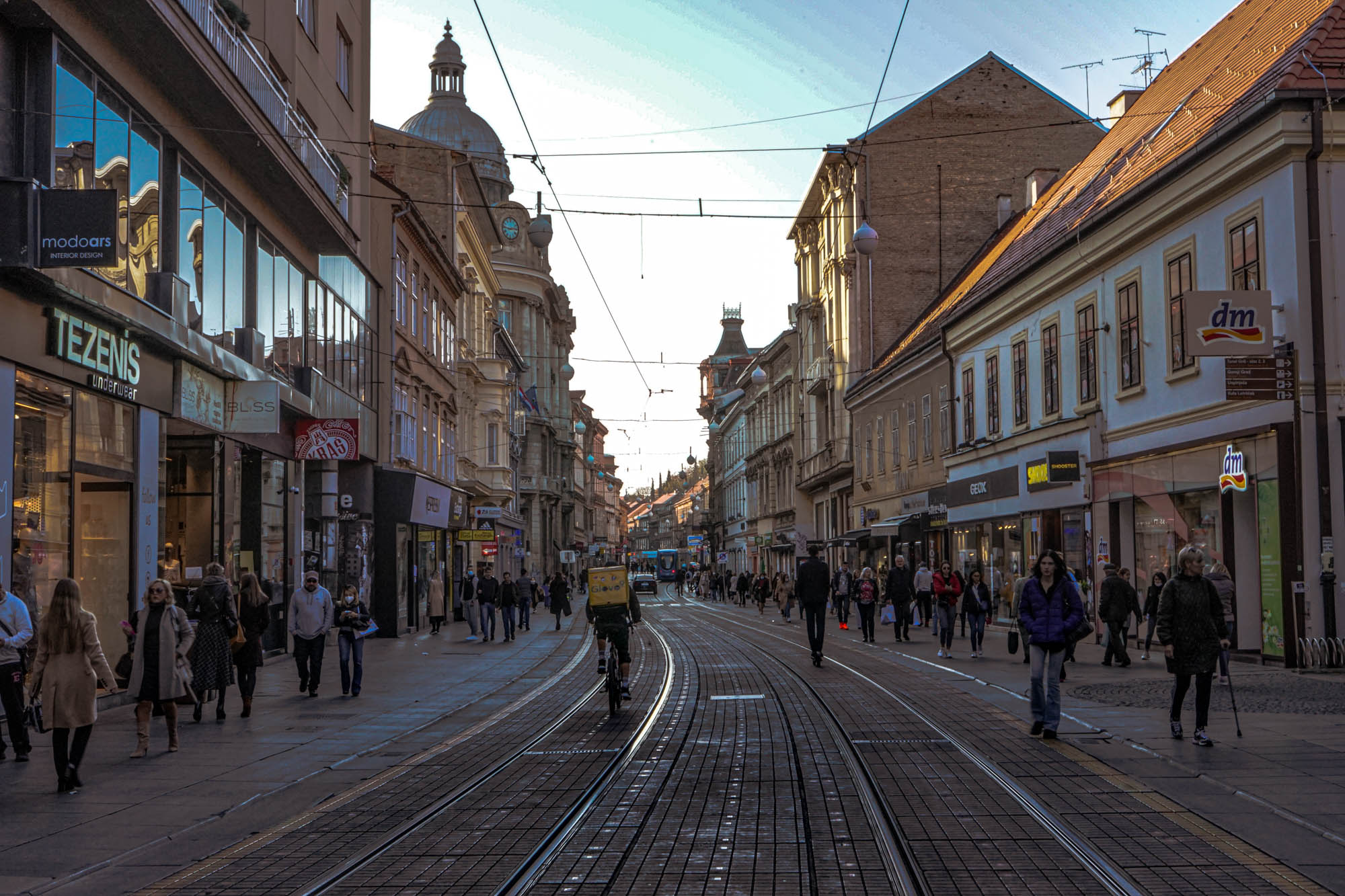“Little Viena”, “The City of Flowers” or the City on the Bega River. All these names refer to a single city, a very charming and one of the most beautiful cities in Romania -Timișoara. In Timișoara you will find the largest architectonic ensemble of historical buildings – a mix of diverse architectural styles, from Baroque, Art Nouveau and Secession. The Bega River is a real tourist attraction, with well-organized pedestrian areas and cycle tracks, with several terraces and parks. The evenings here are animated by the young people, “noisy” discussions and clinks of glasses. But there is so much much more to say. So, If Timișoara is not yet in your travel list, give it a chance and you will definitely not regret it.
We made a list of the most popular places in Timișoara. You should definitely visit them when find yourself here for a weekend.
Since the beginning of the pandemic, we have tried to avoid big cities. We ventured out only in Zagreb last November. Else, we preferred small and calm villages, mountain trails and isolated mansions. But we really missed the “urbanization”: the architecture, museums and people.
Regarding the Covid-19 pandemic, it is important to mention that Timișoara is save for travelers. If you decide to visit the city, you can find useful and updated information regarding the restrictions and other measures of the local authorities here: covid19.primariatm.ro.

Timișoara is home to an industry worth of 11 billion Euro
Before you get to Timișoara you should know some interesting facts:
Timișoara is the capital city of the Timiș County from the historic region, called Banat. It lies in the very west of Romania, near the borders with Serbia and Hungary. Due to its position, where the road infrastructure is well developed, the industry expanded more than in other regions of the country. Its important to know that at national level Timiș is the third County regarding the number of active companies and its turnover – a total of 17.6 billion Euro. Sure, the most important part of the business is in the city of Timișoara (11 billion Euro, based on the 2019 data).
Timișoara – the largest architectonic ensemble of historical buildings in Romania

The city of Timișoara holds the largest architectonic ensemble of historical buildings in Romania – approx. 14.500. One can find it in four central districts: Cetate, Iosefin, Fabric and Elisabetin. This is the result of a long tradition of urban modern planification, starting from the 18th century. The architectural diversity, marked by Baroque, Neoclasicism, Art Nouveau and Wiener Secession styles, gave Timișoara the name of “Little Viena”.
Timișoara – the only city in Europa with 3 state theaters in 3 different languages
It is an unique fact in Europe, that in Timișoara you can find 3 state theaters in three different languages: Romanian, German and Hungarian. These three institutions share the same symbol-building, The Romanian National Opera. It is an example of communion, acceptance, harmony and respect, that you cu get familiar with during your weekend in Timisoara.

A weekend in Timisoara – 10 tourist attractions you should never miss
1. Union Square (Piața Unirii)


It is the oldest square in Timișoara. Here you can find the most important area of Baroque architecture style in the city. The most significant buildings are the two cathedrals (both in renovation now), the Roman Catholic and the Serbian Orthodox (built in classic style), the Baroque Palace and the Holy Trinity Statue.
In its actual form the square was designed between 1988 and 1989. With its area of 150×110 m, the Union Square hosts also the well-known Brück House.
It is one of the most popular squares in Timișoara also thanks to the large number of terraces.
2. Victory Square (Piața Victoriei)

It is the newest square in the Cetate neighborhood with well-maintained baroque style buildings from the 18th century. At the beginning of 20th century, at the same time with the demolition of the fortification, several buildings in “1900 style” were built. The Secession palaces of a great elegance and architectural value are the dominant “figures” of the square.
Victory Square is the place where, on 20 December 1989, Timișoara was declared the first city free of communism. It marked the beginning of victory in the revolution against communist dictatorship.

3. Liberty Square (Piața Libertății)

Liberty Square is Timișoara’s oldest pedestrian area. The location of this square is the starting point of the evolution of the city, the first place where people settled. Here you can find one of the oldest buildings of Timișoara: the Garrison Command (1727), former Chancellery of War (1727), which form the eastern part of the Old Town hall, the Old Town Hall (1731-1734) and the Military Casino (1744). Unfortunately, many of the buildings with architectural value were demolished in the early 20th century. One of them is a former Franciscan church (1736) built in baroque style.
4. Maria Theresia Bastion


The Timişoara Fortress was built between 1732-1761. It was until the beginning of the 20th century the largest military fortification in bastion system on the territory of Romania. The fortress had three “rings” of fortification and included 9 bastions. But, in time, the city needed to develop, and the walls, unfortunately, were demolished as early as 1892. The only bastion left to this day, testimony of the old city, is the Maria Theresia Bastion; the first bastion built and the only one that remained untouched.
5. Baroque Palace

The Baroque Palace is one of the representative buildings of Timişoara, in the city’s main square, now Union Square. Due to its exterior decorative motifs, it is often compared with the Kinsky Palace in Vienna.

The Baroque Palace hosts nowadays the National Museum of Art. Tourists can visit permanently opened collections of Contemporary Art, Decorative Art and a European Painting Gallery. One of the main exhibition is the collection of the painter Corneliu Baba, with over 80 works signed by the artist.


One ticket for an adult costs 20 lei (aprox. 4 EUR). Note: the museum does not have a POS terminal, so you can not pay with a card.
6. Bega River

In 1732 Bega became the first navigable canal built on the actual territory of Romania. The total navigable length was initially 116 km: 44 km in Romania and 72 km in Serbia.
Until the second half of the 19th century the Bega Canal was the main way of transporting goods from Banat region: thousands of tons of products, especially flour, cereals. Water transport was the easiest way; it connected Timişoara with other cities in Banat. Also, on Bega, then on Tisa and Danube Timișoara connected itself with other European cities.
In 1930, vessels up to 70 m long with 50 wagons loaded could be operated on the Bega, the depth of the water being ensured by the locks. The canal was also important for passenger transport. It reached a peak of 500,000 passengers in 1944. Regular schedules were maintained until 1966.
The authorities cleaned the Bega River in the last decade; bike lanes have been set up on its banks, and many restaurants, terraces and leisure venues have opened.



Bega is now the “green soul” of the city. Young people and families come here to enjoy the beauty of the river; others prefer to spend time with a glass of wine or juice; people of all ages choose to walk, run or to do other outdoor activities here. The Bega River runs through several parks. During our weekend in Timisoara I wanted to return to every day on its banks. I really liked the D’arc Terrace, where we drank a glass of rose wine and celebrated our small victories.
7. Timișoara’s parks

The most popular and loved by tourists is the Roses Park, a tourist attraction of Timișoara. In the 19th century, here was the Royal Garden of Roses from Timişoara. From here, roses were exported throughout Europe, often to destinations such as Vienna or Budapest. The English and French-style garden, stretched over 9 acres was opened on July 19, 1891. Unfortunately, the park was destroyed during the wars and could not be restored to its initial surface or variety of plants. Even so, it is a popular tourist attraction especially when the roses are in bloom. Unfortunately, in April we had no chance to see roses in bloom, but in the middle of summer it looks astonishing.


So, do not neglect Justice Park, Children’s Park, Queen Marie Park, Andrei Mocioni Park. It is interesting that these parks are arranged so that you can walk from one to another. Also, be careful not to miss The Botanical Garden.
8. Timișoara Orthodox Cathedral

It is one of the important buildings of the city, built between 1936-1946. It’s architectural style harmoniously combines elements of old Romanian-Moldovan architecture with some eclectic elements. It has 11 towers, covered with colored glazed tiles. With its height of 83.7 m, it is one of the tallest buildings in Timişoara, being the tallest church in Romania and one of the most spacious – it can accommodate over 5,000 people. At the same time, in the basement of the cathedral there is an interesting collection of religious art.
9. Roman Catholic Dome

The dome is the most important Baroque monument in Banat region and also the most important Roman Catholic religious monument in Banat. In the crypt are buried several bishops of the Catholic diocese of Cenad, as well as some of the governors of Banat, military commanders or senior officers. The sarcophagi are simple and modest, without rich baroque decoration. The construction of the dome began in 1736 and ended in 1774. By the decree of Empress Maria Theresa, the dome was raised to the rank of the first church of Timișoara, in 1756. The dome has six side altars realized by German painter Johann Adam Schöpf. As a sign of gratitude, for the support given, the two large statues at the main altar represent the patron saints named Charles VI and Maria Theresa.
10. Visit the museum of the fastest cartoonist in the world

Ştefan Popa Popa’s is the greatest Romanian cartoonist, an important representative of contemporary plastic art. For his great talent, the precision and speed with which he performs the artist received numerous national and international distinctions.
In 1995, Ştefan Popa Popa’s drew 131 cartoons per hour in France, a record approved by the Book of Records. Since then he became the fastest cartoonist in the world.
In the same year he set the world record for endurance, making 2,772 color cartoons in 10 days and 10 nights. More than 200 heads of state and government have portraits signed by Popa’s. Cartoons, photographs, letters, documents and important distinctions can be seen in the museum. The Popa’s Cartoon Museum is located in Theresia Bastion.
BONUS: The Street with flowering cherries


Academician Alexandru Borza Street in Timișoara turns into a spectacle of colors every spring. People came here to admire the flowers of Japanese cherries. The street borders on one side the Roses Park, and on the other side a residential district. Oh, how beautiful it should be to wake up in the morning with such a beauty in front of your eyes…






